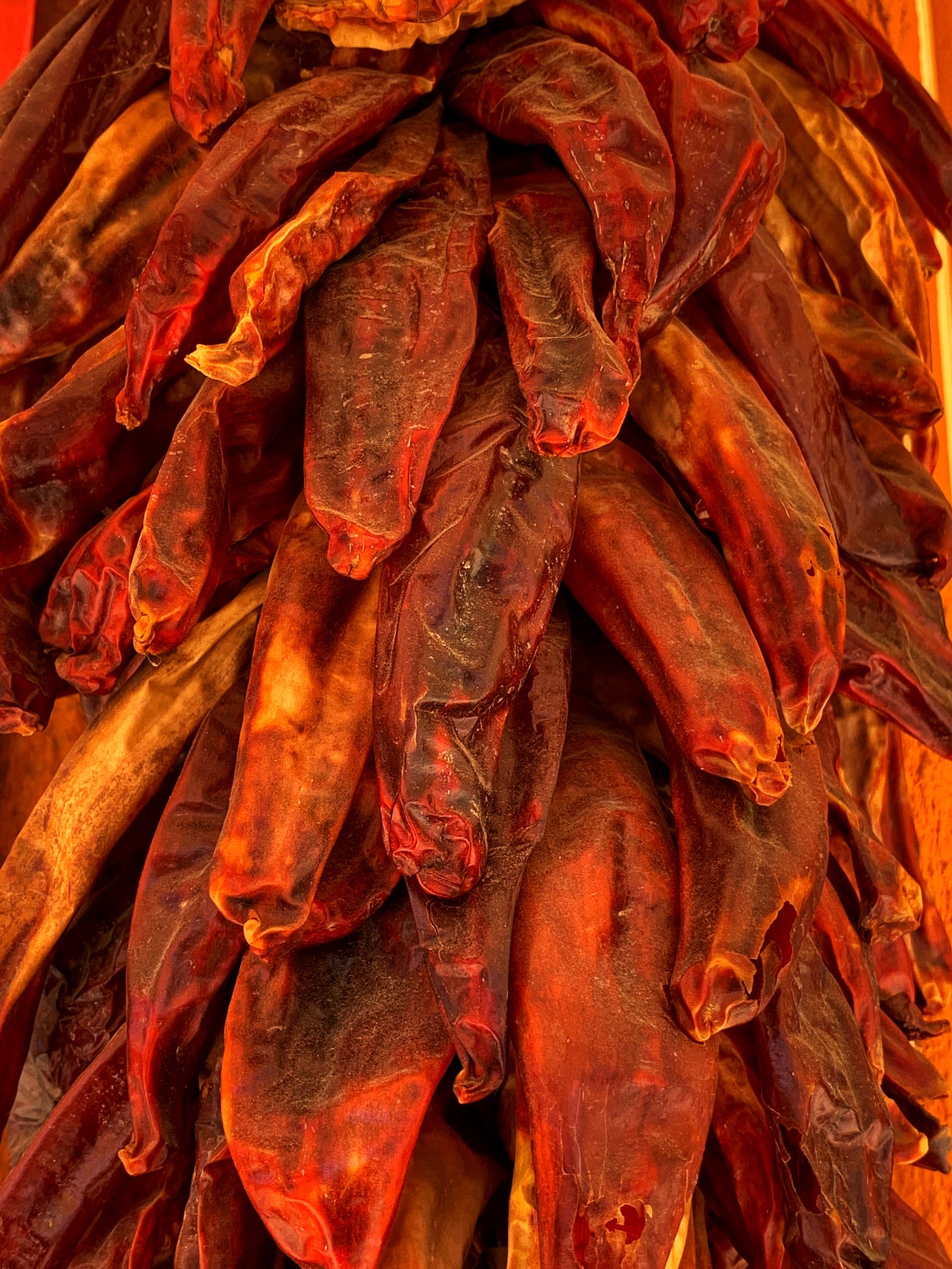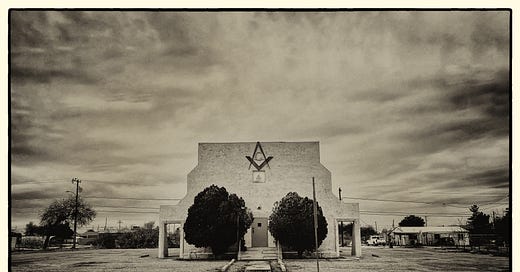Good Photography Comes from Looking. Great Photography Comes from Looking Away.
What happens when you stop referencing and start responding.
Hi, and welcome to my little Substack corner. I write about photography, art, design, and the craft of living creatively. I am glad you are here. Consider subscribing to keep up with what I am doing. I promise not to bore you. If you would like to support my efforts, that would be amazing and so appreciated. Either way, I am super happy you are here.
I’ve spent most of my life looking at stuff.
Through viewfinders, across landscapes, into faces and shadows. It’s what we do as photographers: we look. We study the light, the lines, the contrast. We wait for the moment. We react to what’s in front of us.
But over time, I’ve learned that great photographs don’t come from simply looking.
They come from looking away.
Let me explain.
When I was younger, I devoured other people’s work. I’d lose hours flipping through monographs, magazines, galleries, catalogs. I studied the legends and mimicked the moves. It was valuable. It taught me what was possible. It showed me the language of the craft.
But at some point, too much looking outward became a trap.
The more I filled my head with other people’s images, the harder it became to trust my own. My work started to feel derivative. Safe.
Well-crafted, maybe, but hollow.
Familiar. In all the wrong ways.
“Looking outward can teach you technique. Looking inward is where you find your voice.”
That’s the paradox most photographers never talk about. We’re told to study the greats, keep up with trends, scroll for inspiration. But inspiration overload is real, and too often, it ends with us unconsciously photographing someone else’s vision.
Look, there’s tremendous value in knowing what came before.
But the photographers who make images that truly resonate and stop you cold aren’t usually the ones quoting the past.
They’re not echoing Instagram trends or borrowing the same five poses from Pinterest. They’ve developed the discipline to look away.
Take Saul Leiter.
He wasn’t trying to outdo Cartier-Bresson or duplicate the grit of street shooters in Paris or New York. He saw color and abstraction in a way no one else did.
Partly because he wasn’t looking over his shoulder.
Or Fan Ho, whose frames in crowded Hong Kong alleys are cinematic, elegant, and deeply personal.
Their impact comes from his own visual poetry, not a checklist of how to shoot the streets spewed forth by a random YouTuber.
Even in commercial work, you can feel the difference.
Amazing shooters bring a certain sensibility to the job, even if it’s subtle.
Occasionally, the work defies convention, resulting in a lasting piece that invites the viewer to look again and again.
Something that solves the visual problem while expanding the subject and even elevating it.
“Photographers who always reference others end up solving for expectations. Those who look away start solving for truth.”
Looking away doesn’t mean ignoring the world.
It means tuning out the noise long enough to actually see it.
It means trusting that the weird little idea in your head might be better than the crowd-approved one.
It means giving your instincts space to breathe, and your perspective time to ripen.
And yes, it’s hard.
Harder than mastering lighting ratios.
Harder than learning to retouch skin or shoot tethered.
Harder than understanding the ISL or doing reciprocals in your head.
While the sun sets.
And the client looks on.
Pacing.
Because it requires vulnerability.
It means creating work without knowing if it will be understood.
It means choosing to follow the thing that feels right, even when there’s no reference for it.
“Originality is the byproduct of trusting your own eyes.”
Photography is everywhere.
And that makes it even more critical to look away from the constant scroll, the endless searching, and the over-stuffed reference folder.
Spend more time with what’s right in front of us.
Even better, discover what's within each of us.
Not in the romantic notion of “purity” in art, whatever that means
I’m talking about making more honest photographs. And maybe, just maybe, they will be better photographs than we expect.
Images that flow from our experience, our interpretation, our voice.
So yes, learn the craft.
Study the legends.
Know the wonderful history.
But sometimes, occasionally, walk away from it.
And take a breath. In fact, take two.
Let’s look at something we’ve never photographed before, and don’t ask ourselves what others would do in this situation.
Ask ourselves, “What do we see, how do we feel, and how can we make something that is ours from it.
That’s where the magic lives.
I’m starting a new series here on my Substack.
Introducing: Frames from the Saddle
A new monthly series about photography, the open road, and seeing clearly.
There’s a certain kind of clarity that only comes at 60mph on a two-lane highway with no plan, no playlist, and no passenger. And that’s where this series begins.
Frames from the Saddle is my new monthly photo essay.
Built from the road, the ride, and whatever the light decides to show me.
I travel solo on a big, powder-blue Kawasaki, camera in the saddlebag, tacos for every meal. I'm not really looking for epic landscapes or dramatic scenes. I stop when something small catches my eye.
A fence post.
An empty sign.
A stranger with a story.
I don’t ride to escape anything, I ride to be present wherever I am.
The camera helps me pay attention.
The road makes sure I keep moving.
Each post in the series will feature a short reflection or two, 3–4 images, and a dose of that stripped-down, no-fluff mindset that comes from being out where cell service is spotty and golden hour still means something.
“A camera and a motorcycle. One to move me forward. One to make me stop.”
If you’ve been following my work for a while, you know I care about personal projects.
This is one of mine.
One image.
One mile.
One month at a time.
My first installment drops June 4th.
Southwest of Grants
Frames from the Saddle – Episode One
“What I see from the road isn’t always epic—but it’s always real.”

Pulled out of Grants, NM at sunrise.
Empty road, sky already warming up.
Smelled like dust, oil, and sagebrush. The kind of morning that makes you sit straighter in the saddle and breathe slower.
No destination. Just a vague “southwest,” and a feeling that there might be something waiting down a little road I hadn’t ridden yet.
I didn’t know it, but it was going to be a hell of a day.
…
Coming June 4, 2025
I do coaching for serious photographers.
When you are ready, here’s how I can help you succeed.
Group Mentorship: a small group of photographers who meet to show images, work on their portfolio, and build their businesses with help from a wonderful group. Lifetime membership for one fee.
One-on-one Mentorship: You and me - working together in an intense 6-month push to get you on the way to over $30K in additional revenue. The work we lay down will help you increase and scale your business for years ahead.






Wow. Just wow. I’ve been struggling with this exact problem for months and it is a motivation slayer.
Until the pandemic, I skirted around the edges of my latent desires. One of the earliest and most persistent was photography.
At first, Instagram was a wonderful place for inspiration — to see so many incredible images; to learn the intent behind them (in some cases) and to connect with a few really special photographers whose work resonates.
Now I’m overwhelmed and discouraged by the sheer tonnage of images. I know it’s irrational, but I feel like whatever I put “out there” is unoriginal or derivative or similar to something someone else did better.
So I’m taking your advice to heart and unplugging from Instagram for a while.
A lot of good wisdom here, Don. Overload is a real danger to the photographer, especially now.